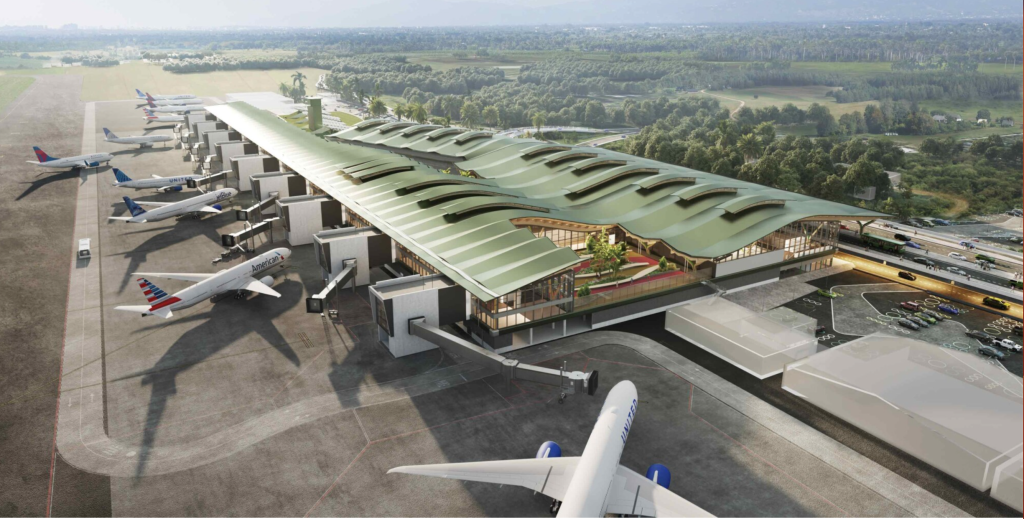
Architect Oscar Torrejón explained in an interview in Listin Diario that his firm has been contracted to design terminal two at the Cibao International Airport as part of a comprehensive expansion of that airport’s services. Torrejón is the architect in charge of the project for the Luis Vidal architectural firm.
Luis Vidal is a Spanish architectural firm that also is developing residential property in Santo Domingo. Luis Vidal has carried out design projects at the Dallas, Texas, Pittsburgh, Pennsylvania and Boston, Massachusetts airports in the USA, and Heathrow airport in London and El Prat in Barcelona.
The new terminal is a US$300 million investment. The first phase of the terminal should be ready by mid-2025. The airport serves Santiago, the country’s second largest city that has become a major center for health tourism in the Dominican Republic.
The new terminal will facilitate the airport experience for the thousands that land in Santiago when headed to destinations in central parts of the country or north coast destinations (a half-hour drive away).
Torrejón says a totally new terminal is being built, not an extension to the current terminal. He said the new terminal will be able to receive four million arrivals, well above the 1.5 million passengers now arriving to terminal 1.
Torrejón says that this will be one of the few airports in the world that will be built almost entirely with a laminated wood structure, making it more sustainable than other existing terminal buildings. He said that this design will have nothing to envy to others that this company is currently developing in the United States or Europe.
“We have invented a design that helps as much as possible to reduce the stress of travel on the user or passenger, and also, if we manage to reduce that stress, what it allows is that if you are relaxed, you buy more,” he said.
The design includes two themed garden areas where passengers will be able to stay and relax.
Likewise, local cultural institutions have agreed to place art spaces that enhance Dominican culture.
Torrejón stressed the importance of the passenger’s experience, from when the passenger disembarks the plane until picking up luggage. He maintains that time at the airport is a tourist’s first impression of a country.
The first of three phases is scheduled to be ready in 2.5 years. The total time for the entire terminal over a 20,000-meter construction area in a lot of 55,000 square meters is five years. Terminal 2 is double the size of Terminal 1 at the airport.
Torrejón explains that from the check-in area, passengers will see the aircraft queue, which, according to the architect, makes it possible for the passenger to be aware of where the boarding gate is, thus reducing passenger anxiety.
In its website, Luis Vidal explains that the expansion at the Cibao International Airport combines a new terminal with the latest airport security technologies and the transformation of the current building into a hybrid mixed-use space. The airport will feature a new high-rise parking lot connected to the new terminal.
There will be space for new offices and a wide range of commercial, gastronomic, hotel and business services complementary to the airport’s aviation services.
Nine assisted positions will be available at the new terminal. The terminal is designed on two levels, segregating departures and arrivals flows to optimize processes. More than 2 km of roadways and 14,000 m² of green areas are being added. A separate elevated roadway provides access to the check-in hall on level 2, and another level access connects everything to the existing building and the arrivals area on level 1.
The architectural firm explains that the design is “inspired by the linearity of the banana, tobacco and coffee fields.” These are crops grown in Santiago and nearby provinces. The firm says that the boundary is blurred and a continuous linear landscape is created throughout the terminal area. The new design takes over the curves of the surroundings, creating indoor-outdoor continuity that turns the gardens into interiors and emulates the vegetated shade trees in the interior roofing materials. More than 4,000 tons of wood will form the roof structure.
Read more in Spanish:
17 January 2023

